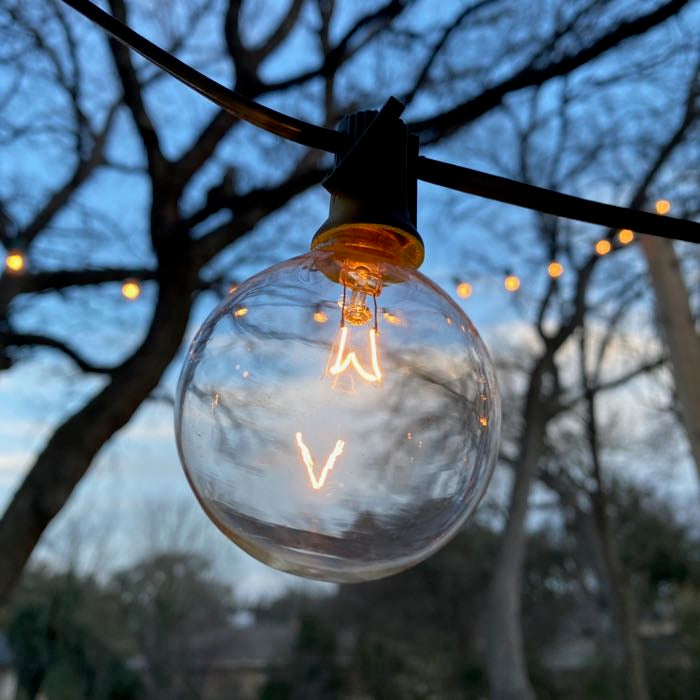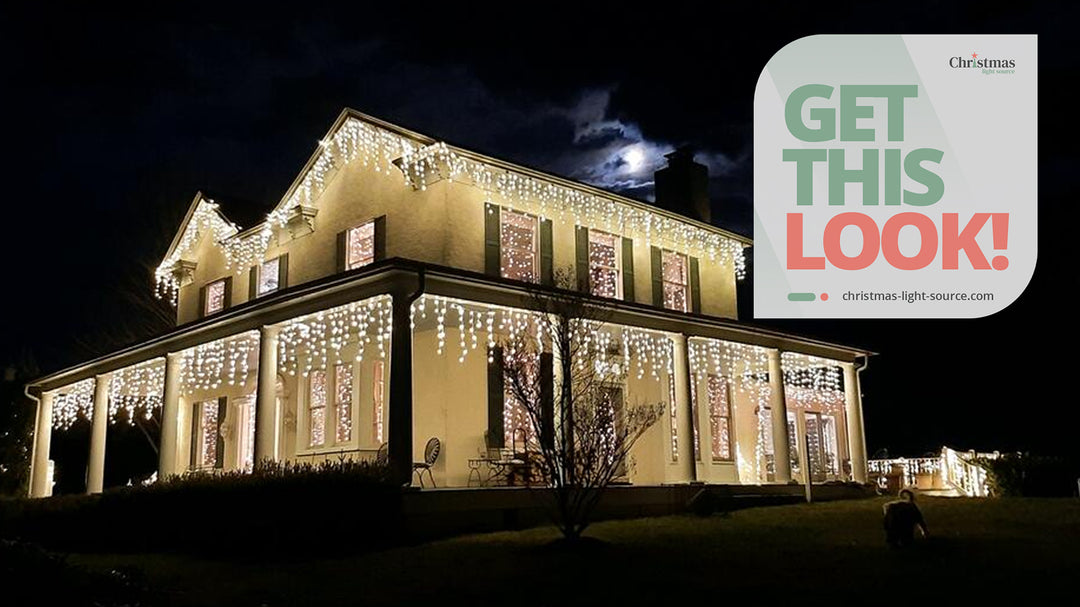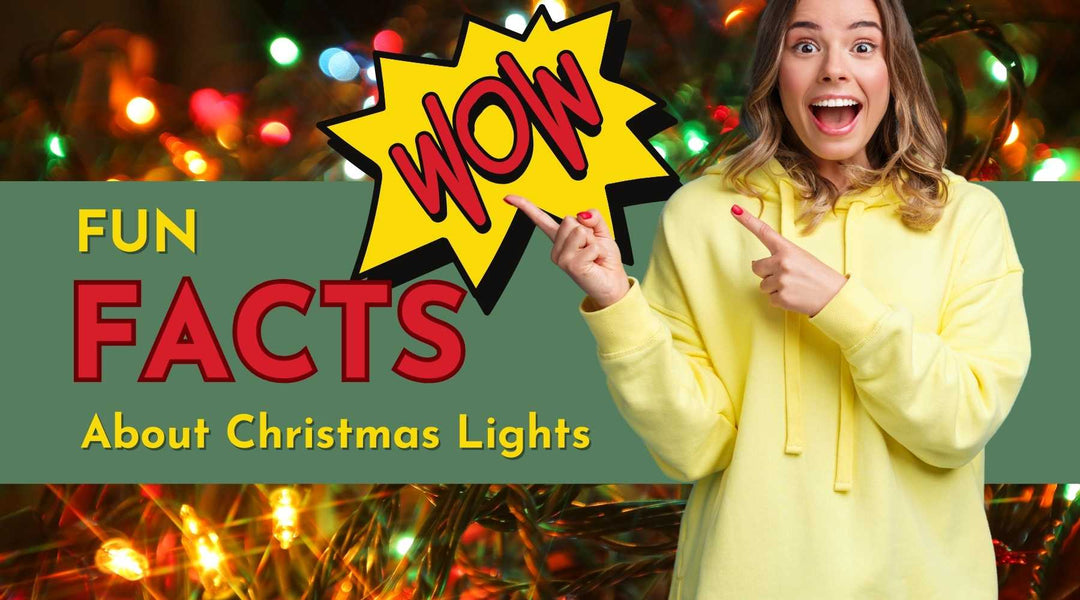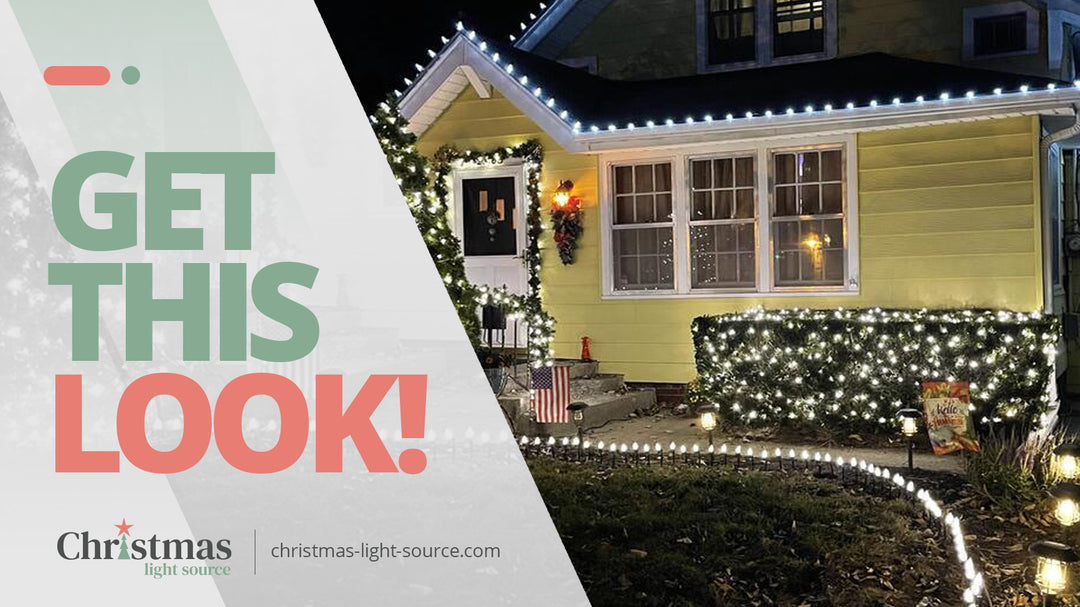How many Christmas lights can I string together?
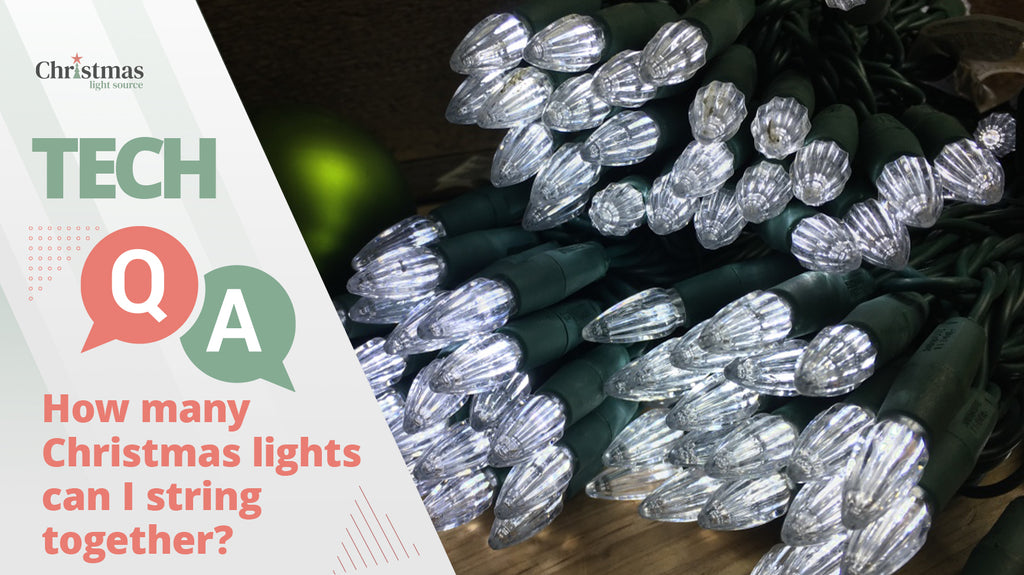
This is a pretty popular question when it comes to Christmas lights. The answer is simple but simultaneously complicated.
Here are a few guidelines but for all things electrical, consult with a master electrician when making decisions about your project.
How many bulbs or strings you can run in series depends on:
1. Answer based on your light string or bulb/cord specifications
Every light string on our website should have a maximum connectivity rating.
(If the item you are looking at is missing that specification, ask a question on that product and we'll research and update that information. We carry a lot of products and every once in a while, one or two will slip past us.)
Guidelines for Mini Lights and LED Light Strings
The maximum connectivity for pre-wire light strings - mini lights, craft lights and LED Christmas lights is based on the UL (Underwriter's Laboratory) maximum connection guideline of 210 watts.
DEFINITION: Maximum connectivity refers to the maximum number of strings you can connect end to end in a single circuit. (Or how many plugs you can stack on top of each other when you are working with craft lights.)
So, maximum connectivity is calculated by dividing 210 watts by the number of total watts required by the light string you are considering. For example if your light string is rated at 20 watts, then you can run a maximum of 10 strings together in series.
Now you can see why LED light strings can be run with so many more in series than traditional incandescent mini lights that require up to 10 more times the power to operate.
UL can change their suggested ratings and we change our specifications to reflect that.
Guidelines 18 and 20 AWG C7/C9 Bulbs and Cords Here are the basic rules about our C7/C9 cords.
1. Connect no more than two 20-AWG 25-foot cords in series in a single run.
2. Our 50 and 100-foot cords do not come with a female plug. They just have a single male plug. If you are using multiple strands, run an extension cord to the center of your project and run a 50 or 100-foot cord from the extension cord splitter. (Think of the cords making the top of a "T" and the extension cord is the vertical line.)
3. If you are using our 1000-foot spools that must be cut to fit, consult with a Master Electrician on your project. Discuss these important guidelines with him or her:
- Our maximum suggested number of traditional incandescent C7 and C9 bulbs is 200 bulbs for each style - especially if your bulbs are spaced 12 inches apart. (The wattage for our bulbs are listed in their specifications.)
- For LED bulbs the maximum number of bulbs you can run in series has less to do with the bulbs specifications and more with the light line length for 18 AWG wire which is 250 feet. This means that even if you are using a .86 watt LED bulb, you can't run more than 250 feet of cord.
We've had customers call in who have received bad information and are under the impression that if they use LED bulbs then they can run 1000 feet of 18 AWG C7 or C9 stringer wire in series. THIS IS AN ELECTRICAL HAZARD. The wire itself will become a fuse and is a fire risk.
That's the biggest advantage to pre-wired LED strings is that you can run 20-88 strings of lights in series. But that's on 20-22 AWG wire with 3-wire engineering. Totally different lighting.
(I just can't tell you how this makes me put my head in my hands and why we're continuing our commitment not to ship your customer service calls to a random third party call center. You may have to leave a voice message but you won't receive information like that!)
Again, take time and spend $100-150 for an hour of an electrician's time to make sure your custom work is electrically correct.
2. Answer based on the electrical service you are plugging them into.
As we mentioned above, keep track of the total number of runs of lights or cords/bulbs as you are splitting them off of your extension cords and splitters and take care not to exceed 85% of the wattage of your breaker. For a common household breaker, use a rule-of-thumb not to exceed 1400 watts per plug.
If you have a larger breaker and have verified that your NuWave Oven or your Microwave isn't on the same circuit and electrician might tell you that you can work with a different number but we like to be safer than sorry.
By the way, that doesn't mean per outlet but per breaker.
Speaking of outlets....
We suggest that you connect all of your Christmas lights into GFCI rated outlets when using them out of doors.
And a word about surge protection....
We also highly recommend that you use an outdoor rated surge protector - they make these with built in timers - for your outdoor installations. LED lights are made of diodes that are like the components of your computer. In the same way that you would never plug a computer straight into a wall outlet, protect your LED lights from surges on the line and use a surge protector.
A standard surge protector (like the one you use for your computer) is fine for indoor usage.
As a random side note - which I'm rather famous for in my circle of friends - I learned from a retired New York state code inspector that the closer you are to hydroelectric power, then the more surges will appear on your line.
So all you folks who use power generated by Niagara Falls or other hydroelectric facilities would be doubly wise to use surge protectors for your Christmas light display and save yourself the heartbreak of seeing your sets take a hit.
Who knew?
Any stories? Share them in the comments. :)
Pin this image for later!



